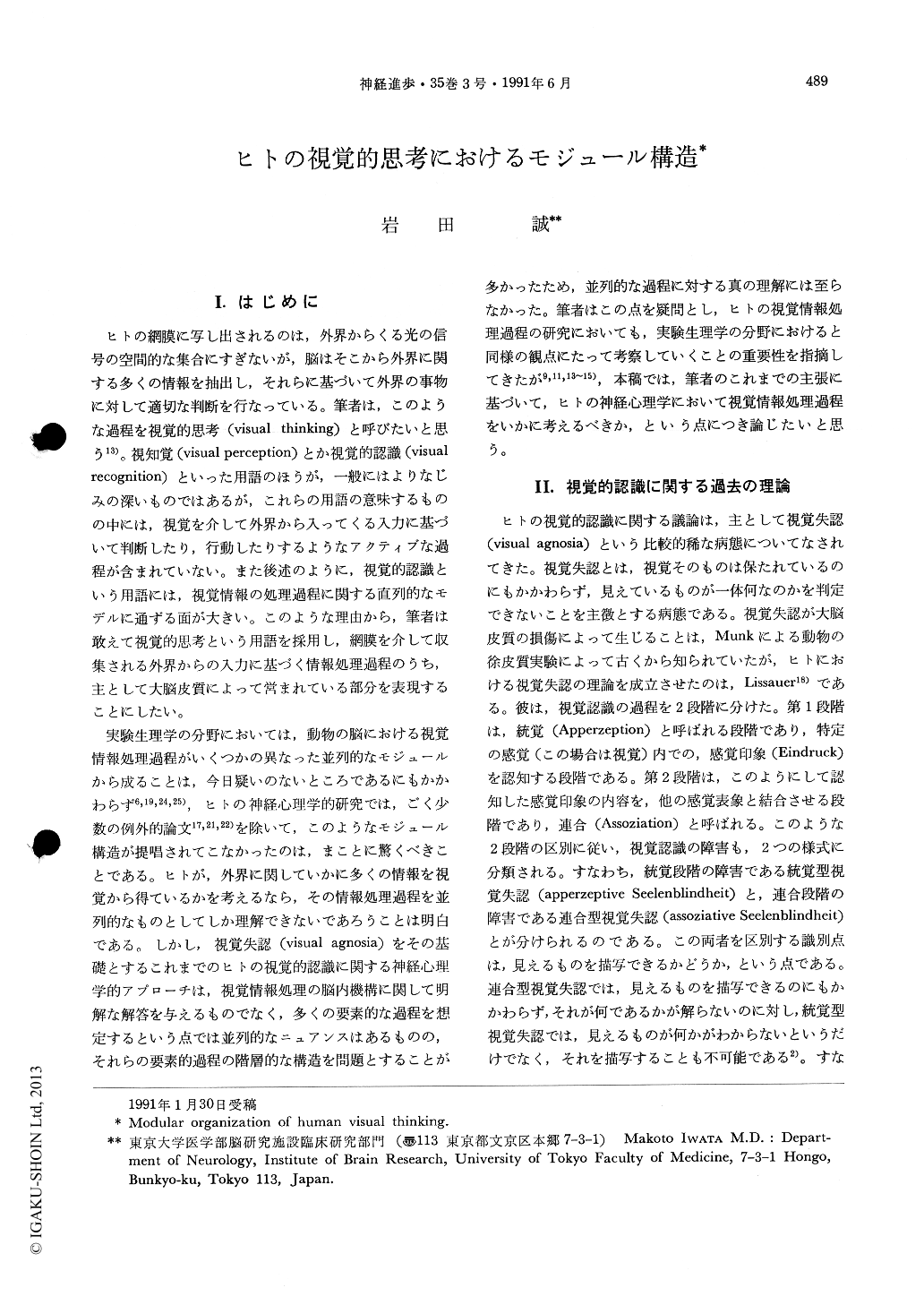Japanese
English
- 有料閲覧
- Abstract 文献概要
- 1ページ目 Look Inside
I.はじめに
ヒトの網膜に写し出されるのは,外界からくる光の信号の空間的な集合にすぎないが,脳はそこから外界に関する多くの情報を抽出し,それらに基づいて外界の事物に対して適切な判断を行なっている。筆者は,このような過程を視覚的思考(visual thinking)と呼びたいと思う13)。視知覚(visual perception)とか視覚的認識(visual recognition)といった用語のほうが,一般にはよりなじみの深いものではあるが,これらの用語の意味するものの中には,視覚を介して外界から入ってくる入力に基づいて判断したり,行動したりするようなアクティブな過程が含まれていない。また後述のように,視覚的認識という用語には,視覚情報の処理過程に関する直列的なモデルに通ずる面が大きい。このような理由から,筆者は敢えて視覚的思考という用語を採用し,網膜を介して収集される外界からの入力に基づく情報処理過程のうち,主として大脳皮質によって営まれている部分を表現することにしたい。
実験生理学の分野においては,動物の脳における視覚情報処理過程がいくつかの異なった並列的なモジュールから成ることは,今日疑いのないところであるにもかかわらず6,19,24,25),ヒトの神経心理学的研究では,ごく少数の例外的論文17,21,22)を除いて,このようなモジュール構造が提唱されてこなかったのは,まことに驚くべきことである。
The visual inputs coming from the external world and catched by the retina are a mixture of meaningless optic arrays from which the human brain extracts meaningful informations by the parallel distributed processing system. The modular organization of this human visual information processing system has not been well recognized, yet, and only a very few papers have so far been published. From the clinical observations of the patients with either bilateral occipito-parietal or occipitotemporal lesions, it was revealed that the visual information processing in the human brain is realized by at least two parallel distinct neural pathways. The bilateral occipito-parietal lesion destroying the dorsal pathway of the visual information processing produces marked impairment of visuospatial function, but the figural pattern recognition is well preserved. On the contrary, the bilateral lesion of the occipitotemporal or the ventral pathway causes severe disturbances of the figural recognition ability, while the visuospatial informations are well processed. Although hitherto published several papers demonstrated right (or minor) hemispheric dominance for these dichotomous visual information processings, left or dominant hemispheric contribution to these functions seems important, too, because the functional deficits caused by the bilateral destruction of each pathway is more marked than those after the right unilateral destruction. Consequently, these dichotomous visual information processing systems are essentially bilateral.

Copyright © 1991, Igaku-Shoin Ltd. All rights reserved.


